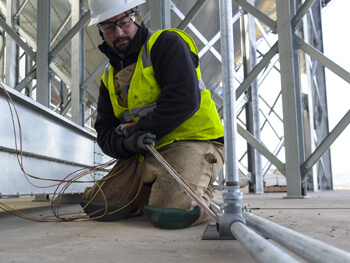About Us
 Quebe Holdings is comprised of six business units: Chapel Electric, Chapel-Romanoff Technologies (CRT), Kastle Electric, Kastle Technologies, Romanoff Electric, and Eagle Electrical Services.
Quebe Holdings is comprised of six business units: Chapel Electric, Chapel-Romanoff Technologies (CRT), Kastle Electric, Kastle Technologies, Romanoff Electric, and Eagle Electrical Services.
Through these companies, we provide a broad range of electrical design, construction, and maintenance solutions.
Both in our home state of Ohio and nationally, our companies have earned a reputation for delivering high quality solutions and outstanding customer service.
Featuring teams of talented electricians, engineers, project managers, and BIM professionals, our companies have expertise in a variety of electrical systems and the latest industry innovations.
Our services include:
- Electrical contracting—design through construction
- Low-voltage design, installation, and integration
- Service and maintenance, including 24/7/365 response
- Building automation and smart technology
- Power, including emergency and fully redundant systems
- Renewable energy solutions, including solar and wind
- Preconstruction, including BIM and prefabrication
Our market expertise includes:
- Automotive
- Commercial
- Entertainment and hospitality
- Federal/Government
- Healthcare
- Higher education
- K-12 education
- Industrial and distribution
- Mission critical data centers
- Power generation
- Renewable energy